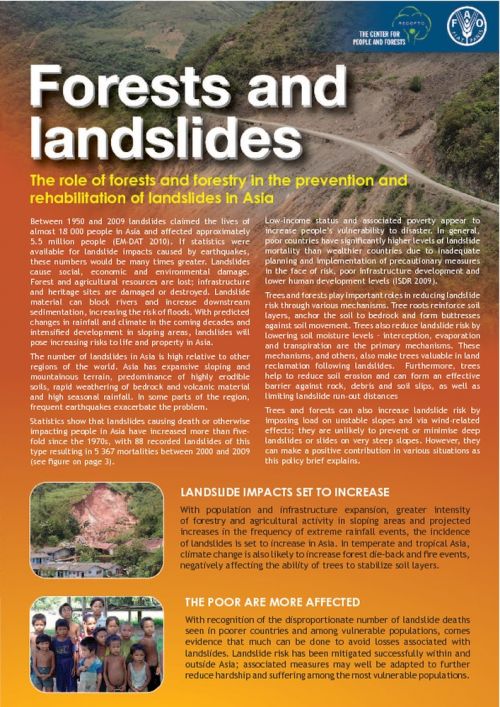APA 6th ed. Forests and Landslides: The Role of Forests and Forestry in the Prevention and Rehabilitation of Landslides in Asia. (2012, January 1). Retrieved from https://www.recoftc.org/publications/0000049
MLA 8th ed. Forests and Landslides: The Role of Forests and Forestry in the Prevention and Rehabilitation of Landslides in Asia. RECOFTC, 1 January 2012, https://www.recoftc.org/publications/0000049.
Chicago 17th ed. RECOFTC. 2012. "Forests and Landslides: The Role of Forests and Forestry in the Prevention and Rehabilitation of Landslides in Asia." Published January 1, 2012. https://www.recoftc.org/publications/0000049.
Forests and Landslides: The Role of Forests and Forestry in the Prevention and Rehabilitation of Landslides in Asia

Trees and forests play important roles in reducing landslide risk through various mechanisms. Tree roots reinforce soil layers, anchor the soil to bedrock and form buttresses against soil movement. Trees also reduce landslide risk by lowering soil moisture levels – interception, evaporation and transpiration are the primary mechanisms. These mechanisms, and others, also make trees valuable in land reclamation following landslides. Furthermore, trees help to reduce soil erosion and can form an effective barrier against rock, debris and soil slips, as well as limiting landslide run-out distance.
Trees and forests can also increase landslide risk by imposing load on unstable slopes and via wind-related effects; they are unlikely to prevent or minimise deep landslides or slides on very steep slopes. However, they can make a positive contribution in various situations as this policy brief explains.

